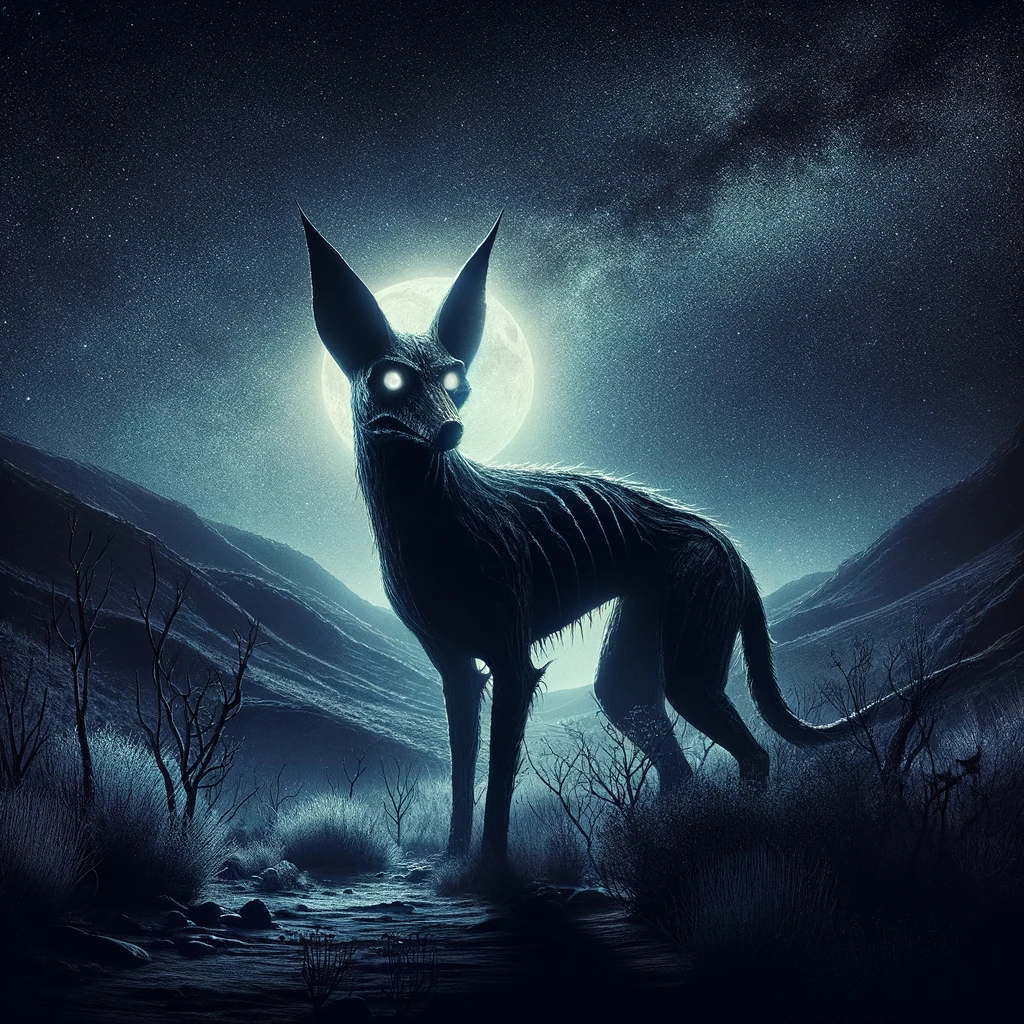In the annals of cryptid folklore, few creatures have captured the imagination and incited fear as much as the Chupacabra. This enigmatic entity, whose name translates ominously to “goat-sucker” from Spanish, has been a pervasive legend in the Americas, with New Mexico among the states caught in its mystical web. Originating from Puerto Rico in the 1990s, the tale of the Chupacabra quickly spread across Latin America and into the United States, weaving a complex tapestry of myth, mystery, and speculation.
The Genesis of a Legend
The Chupacabra saga began in Puerto Rico in 1995, following reports of livestock found dead, their bodies drained of blood through a series of small incisions. The creature described by eyewitnesses was unlike any known animal: a reptilian entity, with leathery or scaly greenish-gray skin, sharp spines or quills running down its back, and red, glowing eyes that could freeze the bravest of hearts. This description, however, would evolve as the legend migrated northward.
The Chupacabra in North America
As the Chupacabra legend crossed into Mexico and the United States, its description began to change. In many instances, particularly in the southwestern United States, the creature was described more as a strange, hairless dog or wild canine afflicted with mange. This version often features a pronounced spinal ridge, unusually pronounced eye sockets, fangs, and claws, but lacks the reptilian aspects of its Caribbean counterpart.
Despite the differences in description, the modus operandi remains largely consistent: the Chupacabra is said to prey upon livestock, especially goats, leaving behind eerily drained corpses that bear little sign of struggle or blood spill.
Scientific Explanations
The Chupacabra phenomenon has not gone without scrutiny. Skeptics and scientists alike have sought rational explanations for the sightings and livestock deaths attributed to this fearsome creature. The prevailing theory among skeptics is that the Chupacabra sightings can be attributed to wild dogs or coyotes with severe cases of mange, which causes their hair to fall out and skin to thicken, giving them an appearance that could be mistaken for something out of this world.
Moreover, the mysterious livestock deaths have been examined by veterinarians and wildlife experts, many of whom suggest that the “blood-draining” aspect could be exaggerated, with natural predation or diseases being the likely culprits behind the killings.
Cultural Impact
Regardless of its true nature, the Chupacabra remains a potent figure in popular culture, inspiring a multitude of books, films, and television shows. Its ability to evoke fear, curiosity, and fascination reflects deeper human instincts about the unknown and the mysteries that lurk in the shadows of our world.

The Chupacabra also serves as a reminder of the rich tapestry of folklore and myth that spans across cultures and borders, uniting us in our shared desire to understand the unexplainable. Whether as a cautionary tale of the unknown or a symbol of the mysteries that still elude our grasp, the legend of the Chupacabra continues to captivate and intrigue, a testament to the enduring power of myth in the human psyche.
